Elder
Dempster MS Calabar 1935 & Epirotiki Lines MV Semiramis 1953
Please Note: Firefox and some other search
engines are not suitable – Use “Internet
Explorer” for this page to load
perfectly!

Click
the logo above to reach the ssMaritime FrontPage for News Updates &
“Ship of the Month”
With
Reuben Goossens
Maritime
Historian, Cruise‘n’Ship Reviewer & Author
Please
Note: All ssMaritime and other related maritime/cruise sites are 100%
non-commercial and privately owned. Be assured that I am NOT associated with
any shipping or cruise companies or any travel/cruise agencies or any other
organisations! Although the author has been in the passenger shipping industry
since 1960, although is now retired but having completed over 700 Classic Liners and Cargo-Passengers Ships
features I trust these will continue to provide classic ship enthusiasts
the information the are seeking, but above all a great deal of pleasure!
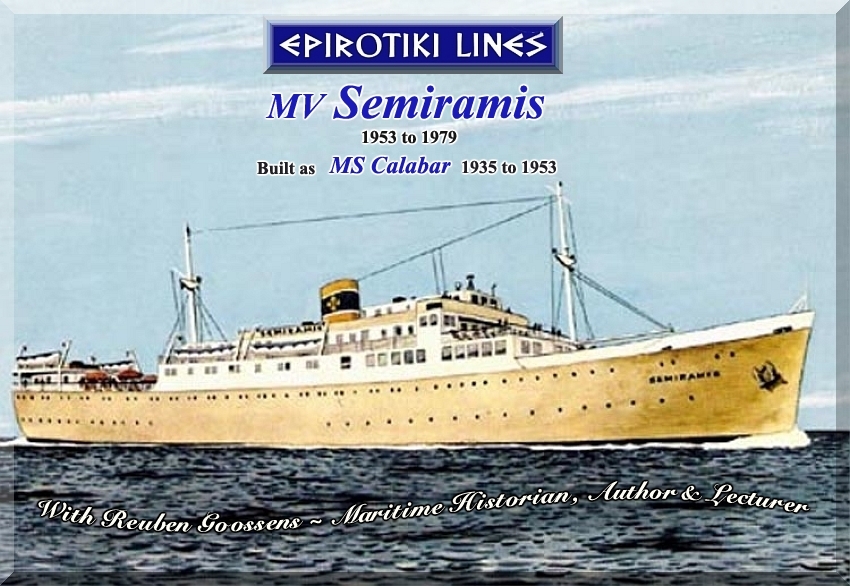
Page One
The
Ship that Commenced the Popular 4 & 4 Day Cruises to the Greek Islands
When
Two cruises were Combined it became a 7 Day Aegean-Grand Circle
Cruise!
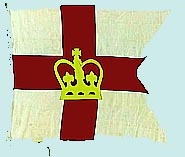
Elder
Dempster Lines
Introduction:
Welcome to a new feature covering the very
early days of long established Epirotiki Lines purchasing second hand ships in
order to enter a brand new market of operating a cruise service around the
Greek Islands, which they were the very first to establish!
This page and the three pages to follow will
cover some of the earliest nine small cruise ships, with the greatest tonnage
being 5,251 tons, being two ships shown on this page. Sadly I have very little
interior details of the ships listed on this page, however should I locate
brochures and deck plans of these, I will of course add them online in due
course, all being well! But, you will find that for the next two ships there
are ample photographs as well as comprehensive deck plans, and the same applies
for the final three ships shown on Page Four!
I sincerely trust that you will enjoy this
feature for I was a friend of the late Mr. George Potamianos for after he left
Epirotiki and  went
to commence his own cruise company, which was “Classic International
Cruises” that in due course had an amazing fleet of ships. I was
fortunate enough to sail on them a good number of times, (and remember, my policy is as always, I pay my own fares!). Ships like
the wonderful MV Funchal and the amazing MV Athena, two ships I dearly love and
both are still sailing, but for other companies! I was to meet dear George in Lisbon Portugal
when the Athena was to be in port, whilst I was on yet another voyage from Australia to Portsmouth
England,
however, sadly just before we arrived he had fallen
very ill and was rushed to hospital. Tragically, Mr. George Potamianos passed
away, before we even reached The United Kingdom, less than a week later.
There is a special page online (Page Five) that Honours him and his countless
achievements!
went
to commence his own cruise company, which was “Classic International
Cruises” that in due course had an amazing fleet of ships. I was
fortunate enough to sail on them a good number of times, (and remember, my policy is as always, I pay my own fares!). Ships like
the wonderful MV Funchal and the amazing MV Athena, two ships I dearly love and
both are still sailing, but for other companies! I was to meet dear George in Lisbon Portugal
when the Athena was to be in port, whilst I was on yet another voyage from Australia to Portsmouth
England,
however, sadly just before we arrived he had fallen
very ill and was rushed to hospital. Tragically, Mr. George Potamianos passed
away, before we even reached The United Kingdom, less than a week later.
There is a special page online (Page Five) that Honours him and his countless
achievements!
The late and greatly missed, Mr.
George Petros Potamianos-
The Epirotiki Story in Brief:
The Epirotiki Shipping Line began when Mr.
Anastassios Potamianos commenced his first shipping venture in 1850 by
transporting both cargo and passengers along the River Danube between the Island of Cephalonia
and the City of Braila.
Assisting Mr. Potamianos was his nephew, Giorgos Potamianos.
When Anastassios Potamianos passed away in
1902, Giorgos took over control of the company and took the emblem of the
Byzantine Cross as the company's trademark, and changed the company name to
Epirotiki. In 1916 Giorgos moved to the new centre of shipping of Piraeus, acquiring his
first steam powered ship. By 1926 the company owned 15 passenger vessels
ranging between 800 to 1,500 GRT (Gross Registered Tons).
Considering the Potamianos family had been in
the shipping industry since 1850, it took them just over one hundred years to
enter to enter their company Epirotiki Lines into operating passenger services.
In fact Epirotiki pioneered cruises in the
Aegean Sea working in conjunction with the “Hellenic National
Tourist” Office and establishing round cruises to the Greek Islands
and Eastern Mediterranean. In order to do this
they obtained a 1935 built ship from Elder Dempster Lines being a
passenger-Cargo ship in 1953 and this was the beginning of the passenger
services for Epirotiki Lines, thus this page will tell the story of this very
special ship!
MS Calabar:
The mini Passenger-Cargo
Liner, the MS Calabar of 1.933 GRT (Gross Registered Tons) was built at Harland
& Wolff Yards in Belfast
in 1935 for Elder Dempster Lines. This small liner first traded on the West
Africa coastal service, then later on the long Takoradi
(Sekondi), Ghana; Lagos, Nigeria; with her
destination being Cape Town, South Africa. The Calabar operated this service on
a year round basis.
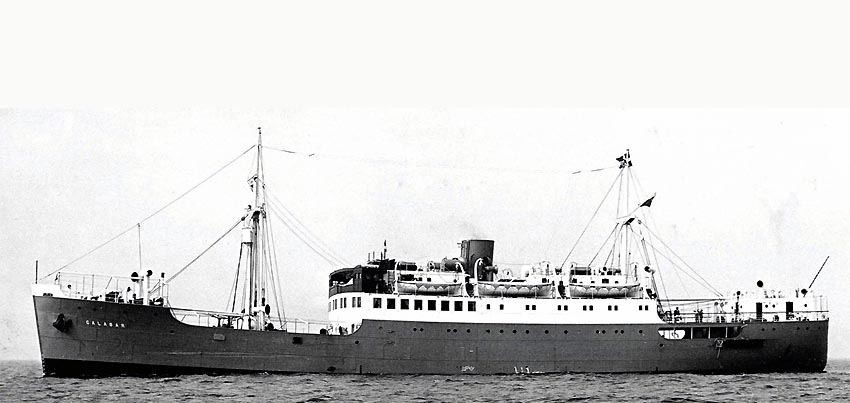
MS
Calabar is seen here in her early days, with the Bridge located on Boat Deck
Whist
topside there was an open emergency Bridge, and it
can just be seen
The Calabar as it turned out was
a ship that was built within a calendar year being 1935 being quite an
achievement! Yet
having been built at such a great speed, she turned out to be an extremely well
built and a strong and a sturdy ship. For her cargo,
she had three cargo holds, two forward and one aft.
However she was also a passenger liner and she
offered First Class passenger accommodations for 40 passengers as well as 12
passengers in Second Class; making a total of 52 persons in the two classes.
First Class offered comfortable two berth cabins that could be cleverly be
converted and sold as single bed cabins: for in those days the colonial
administrators valued their privacy when they travelled and that came with
their seniority. They had a lounge come Smoking Room and a Dinning Room as well
as a writing room and hairdressing facilities.
In the poop area (aft) the 12 Second Class
passengers were accommodated in just four three berth cabins adjacent to a small
dining saloon, which was also their lounge: without it being designated as the
lounge.
Whilst forward of this area up on the Upper
Deck, being the location of Hatch number 3 was a deck area that was available
for “Deck passengers,” who were known as “Deckers” and
they were big business for most Elder Dempster ships as they voyaged between
the West African coastal ports. Frequently their accommodation under the sun or
at night would be nothing more than just a very basic hatch tent that would be rigged
over the closed hatch.
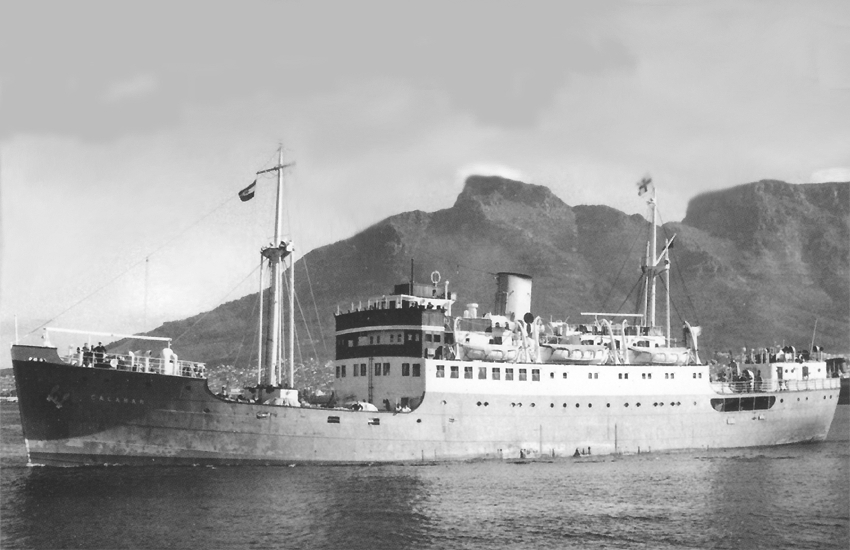
The
Calabar is seen here at Cape Town
after the 1948 refit a new enclosed Bridge was built on the new Bridge Deck
The
photo was sent in, but the photographer is unknown - Please see the Photo Notes
at the bottom of the page
In the forward section
of the superstructure was a 60ft x 38ft space, which contained the two main
First Class public venues, Dining Room on the portside and the Lounge and bar
on the starboard side. These two venues were perfectly divided by large sliding
glass doors and large windows, allowing light to radiate through both venues
during the day! The Dining Room offered one sitting and there was a pantry
which was linked directly to the main galley located directly one deck down,
and it was serviced by a small lift that transported the food up rapidly. The
Lounge had the main windows on the two sides, all of which could be opened;
this was designed to ensure the venue to be a cool space in a climate where the
ambient temperature was seldom below 80°F or 26°C.
From what I have been told, a photograph that
was taken in the 1930s of the dinning room, it reveals that the furnishings was
made of a rather stark steel type of furniture, and there was certainly no
discernable attempt at giving this ship a contemporary art deco style or even a
comfortable look. I was told that this was the result of the …
“Calabar was constructed and designed
under the supervision of Mr. J. B. Wilkie an austere man, who was the
owner’s chief engineering superintendent and who tended to minimise on everything.
The truth is that he would have been more interested in the ships main engine
being installed and therefore he took little to no care when it came to her
ambience!”
A new Style of Engine:
The Calabar received the first
ever Harland & Wolff built five cylinder Burmeister & Wain-type diesel
engine producing 1,400 BHP, and it was said, that “It was to be
considered an early form of super or turbo charging.” Well to be
perfectly honest that was rather an overstatement! However, considering that
this B & W engine operated most efficiently for almost 46 years it must
have been an operational success. Forward of the engine room and under the
storage space were two large tanks for diesel oil that could be purified
onboard. Three 40Kw generators supplied power for the all-electric systems and
cargo gear onboard. The layout of the three cargo hatches were simply holds for
the fast stowage of general cargo to be trans-shipped from the mainline vessel
and the return cargoes were bagged oil seeds. Hold number 3 was used mostly for
mail, parcels and passenger baggage on the upper level.
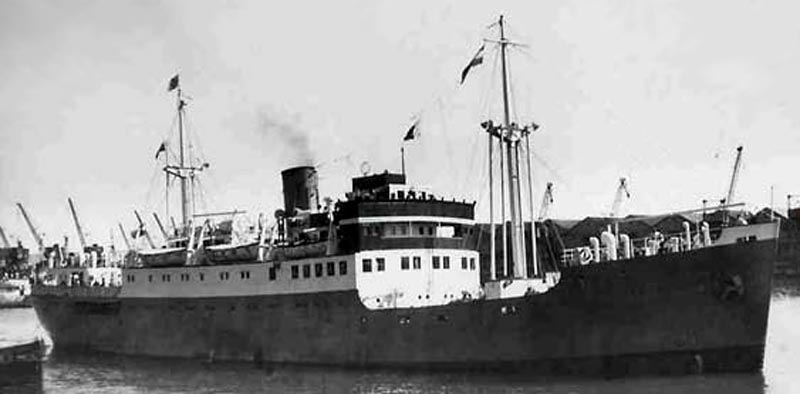
Another
photo of the MS Calabar as she comes to the end of her Elder Dempster service
Photograph from
& © Robert Pabst collection
Early in 1935 she
departed her maiden voyage under the command of Capt. J. J. Smith and she
headed off on her West African Coastal services. This lasted until after the
war. In 1948 she returned to Harland & Wolff for a refit, where finally her
Bridge was raised up one deck to the new Bridge Deck, as it had been on Boat
Deck since being built, with only an emergency station above! The other
exterior change was the raising of her funnel, which was now higher.
Internally, she had received new furnishings and other cosmetic changes, making
her a far more comfortable ship for the new and longer service she was about to
commence. When completed, under the command of Captain C. E. Edge she commenced
her longer service to Takoradi-Sekondi), Ghana
and Lagos, Nigeria
to Cape Town, South Africa.
During her career,
she was a successful ship, but in due course new, larger and far superior ships
entered into service, like the wonderful 14,083 GRT MS Aureol in 1951.
Therefore the company decided to sell the Calabar in 1953, two years after the
Aureol commenced service.

MV Semiramis:
Epirotiki
Lines obtained the MS Calabar in 1953 for £42,000 (English Pounds) and took her
to Greece
where she was given a comprehensive refit and a partial rebuild to become a
cruise ship. On Bridge Deck, the Bridge was modernized, whilst forward on
Promenade Deck there was now a large deck space covering what used to be, where
hold number two had been, for it had been removed and it was now used for
accommodations, etc. The Dining Room had gone and the Lounge had now stretched
right across the ship, for a new Dining Room had been relocated down on Main
Deck where the hold area used to be. Only a few cabins had private facilities
such as a toilet and a shower. And the ships passenger capacity was around 80,
although I am unable to obtain confirmation of her early numbers.
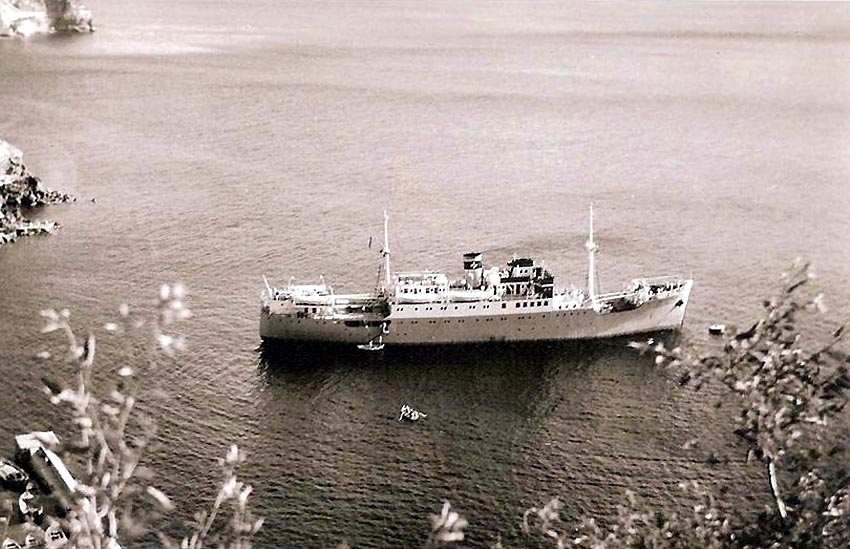
A
rare postcard of the delightful MV Semiramis seen after her original refit was
completed late in 1954
Epirotiki
pioneered cruises in the Aegean Sea, working in conjunction with the
“Hellenic National Tourist” Office and establishing specialty
cruises to the Greek Islands and Eastern
Mediterranean.
Thus the main purpose
of obtaining this particular ship and rebuilding her into a cruise ship in
order that Epirotiki could pioneer this, being a new market, which had not been
greatly explored previously, and the Semiramis was the very first cruise ship
to do so! She was indeed the pioneering ship that commenced the entire Aegean Island cruise business and has created 3 and 4 days
cruises, which could be combined to make an unpatrolled week-long voyage. Ports
of call included gems such as; Delos, Skiathos,
Rhodes, Mykonos, Crete and much more! On the 7
day cruise the passenger would encounter, the Minoan, Archaic, Classical,
Hellenistic, Roman, Medieval and Byzantine and all this in the comfort of this
fine classic intimate yacht like ship! The Semiramis commenced her cruises in
1955 and she certainly became a rapid success and she needed further public
rooms as well as cabins!
Major early 1960s Rebuild:
However,
it was not long after Epirotiki realised that they needed to upgrade the
Semiramis extensively, and thus in the early 1960s she underwent an extensive
rebuilding programme and yet another refit, bringing her up to the required
standard that was required for a far higher standard of cruising!
Sun Deck:
Far
forward, directly above the “new Main Lounge” was the spacious new
“Solarium,” being a popular Deck space used for relaxing as well as
for viewing when entered a fascinating port of call, such as one of the
magnificent White
Greek Islands!
Aft there were six
cabins all with Private Facilities, two were located portside forward and these
could only be entered from the deck outside, and thus passengers in these
cabins needed to walk to the aft housing where the other cabins were and enter
the hall head down the stairs to Promenade Deck for the Lounges, or Main Deck
to the Dining Room.
Promenade Deck:
Major
changes had taken place at the forward part of the Promenade Deck, for the
superstructure was stretched forward over the previous hold number 2, that was
already covered in her original refit and rebuilding, thus it just required
strengthening of the flooring and the building new housing that created a brand
new spacious lounge, having windows on three sides. Although there was a great
deal of glass on the inner wall as there were glass doors and windows
separating the venue to the Smoking Room and Bar
directly aft. Aft of the public rooms were nine cabins all with all with
private facilities. Far aft there was a spacious deck area as well as a
Swimming Pool, a Solarium, and Medical Centre in the aft housing.
Main Deck:
Far
forward was the spacious Dining Room, which was located somewhat to starboard
directly below the Main Lounge over ex hold one. Aft of the Dining Room, on the
starboard side were seventeen cabins as well as a Card Room and a Beauty
Parlour. Nine of these had Facilities.
A Deck:
This
Deck contained cabins fore and aft. Around 28 out of 74 cabins had private
facilities, although six of those cabins on A Deck had a shower only.
Upon completion she
looked a smart little ship with her buff hull, gleaming white superstructure,
her two tall main masts combined with and her yellow funnel, with a big blue
band around it with the traditional yellow Epirotiki logo on both sides, and
along the waterline her red boot topping. She was now registered at Piraeus and at 1,964 GRT.
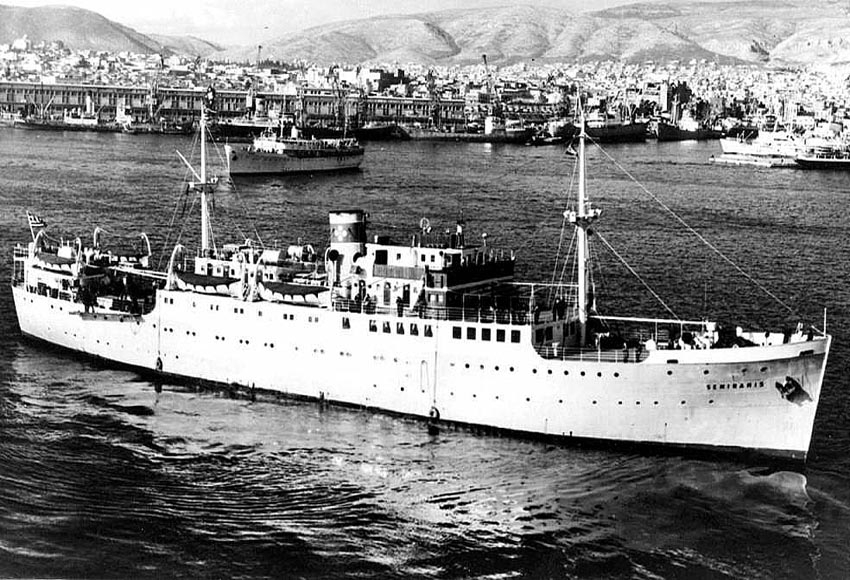
Here
we see her new look with her Promenade Deck stretched forwarding around 1963
The Semiramis received several
further refits, one in 1966 and whilst having her annual service she received a
sprucing her up with new carpets and soft furnishings in 1970. Upon completion
she commenced seven day cruises from Piraeus to
the Aegean islands as well as to Turkey!
MV Semiramis Photo Album
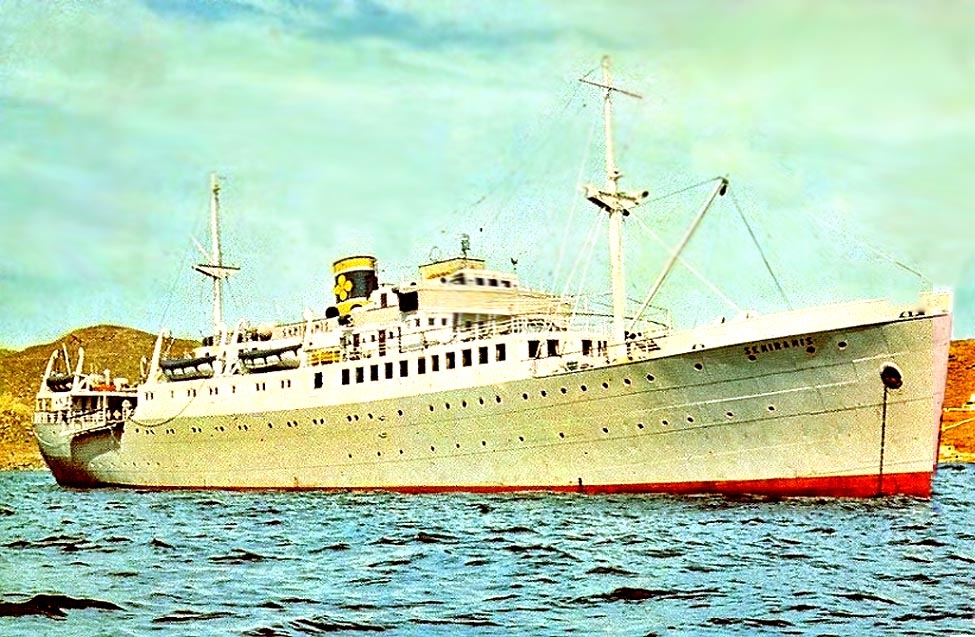
The
MV Semiramis as seen in 1966
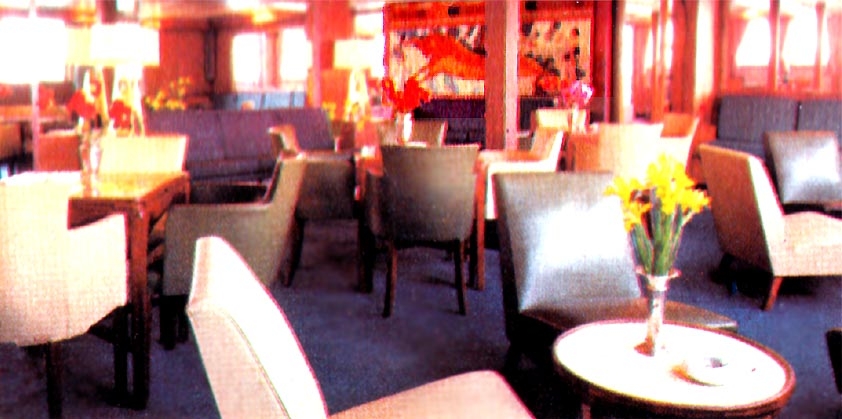
Here
we see her wonderful new Lounge forward of Promenade Deck seen from port to aft
The
Smoking Room can be seen through the windows just aft of the Lounge
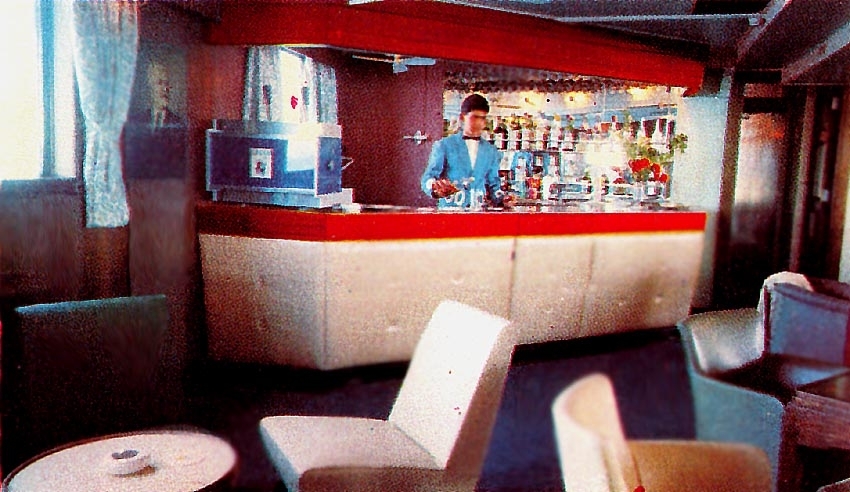
The
Bar in the delightful Smoking Room was located aft and on the starboard side
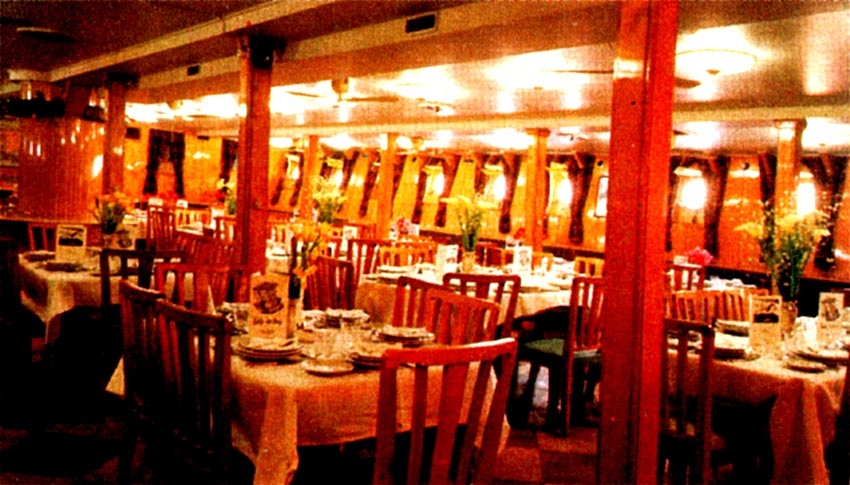
A
delightfully nautical looking Dining Room located on Main Deck forward
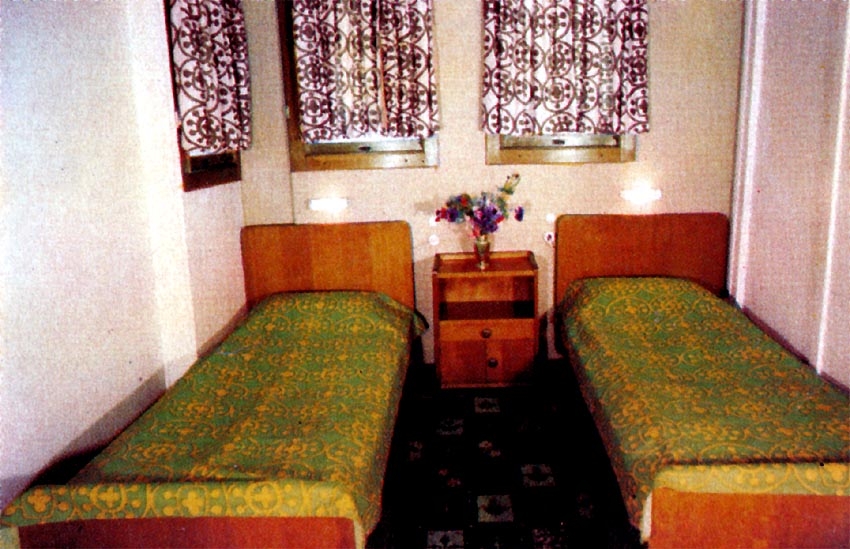
Cabin
Nr. one, Sun Deck forward, a twin bedded cabin with three windows and with
Private facilities
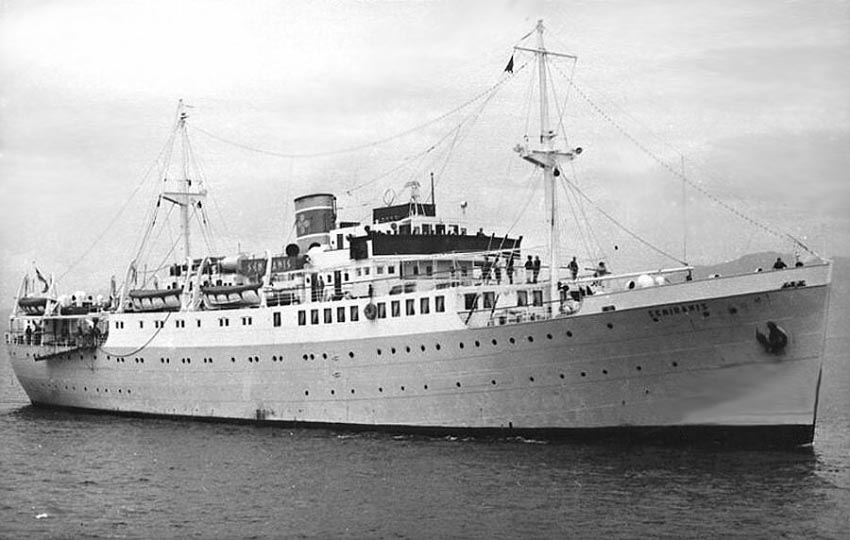
A
black and white study of the MV Semiramis
The
Semiramis proved to be extremely popular, even though she was far from being a
luxurious ship. Yet she offered the right cruise programme with all the
exciting ports and the ship had an intimate nautical atmosphere offering
excellent service and passengers enjoyed the best of cuisine!
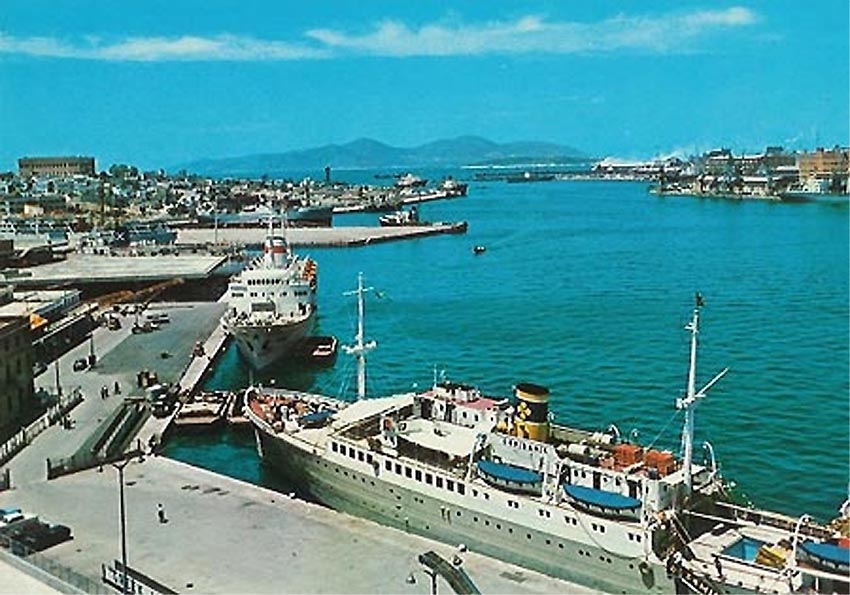
A
postcard of the Semiramis seen berthed in Piraeus,
Greece as she is ready for
another cruise
Note
the shade far forward on Boat Deck, or the “Solarium” giving shade
as guests spend time up there
Her Final Days:
Thus
Epirotiki used there first faithful small cruise ship for a good 26 years, but
finally in 1979 she was chartered to a Saudi Company “Shobokshi
Maritime” who relocated her to the Middle East” where she was used
as a workers’ accommodation ship. However when the charter expired she
was sold to a Singaporean breaker to be broken up and she departed for Singapore in
February 1980.
MV
Semiramis arrived in April at the breakers Yards in Singapore of the National Ship
breakers, Pty, however, work did not commence until October and thus breaking
was not finished until February 1981, being 46 years after the MS Calabar
departed on her maiden voyage.
Specifications for 1 =
MS Calabar & 2 = MV Semiramis:
Name: 1. MS
Calabar III - 1935-53.
Operator: Elder Dempster
Lines.
Name: 2. MV
Semiramis.
Operator: Epirotiki Lines
1953 - 1997.
Built
by: by
Harland & Wolff, Belfast
in 1935.
Yard: 954.
Tonnage: 1. 1,933
GRT.
. 2.
1,964 GRT.
Length: 249.4ft - 75.9m.
Beam: 41.2ft - 12.5m.
Draught: 16.3ft - 4.95m.
Engines: Five cylinder
Burmeister & Wain-type diesel by the builders.
Screws: Single - 1,400
BHP.
Speed: 10 knots.
Accommodations:
1. 40 First Class,
12 Second Class passengers
. 2.
185 One Class.
Passenger
Decks: 1. 3.
. 2.
4.
There was no doubt that the MV
Semiramis encouraged Epirotiki Lines to enter into an upmarket cruise programme
and thus back in the early 1960s they decided to commence a search for a ship
that they could convert into an all first class product, and they soon found
one in 1964, this was the ship that would become the luxury cruise ship the MS
Argonaut.
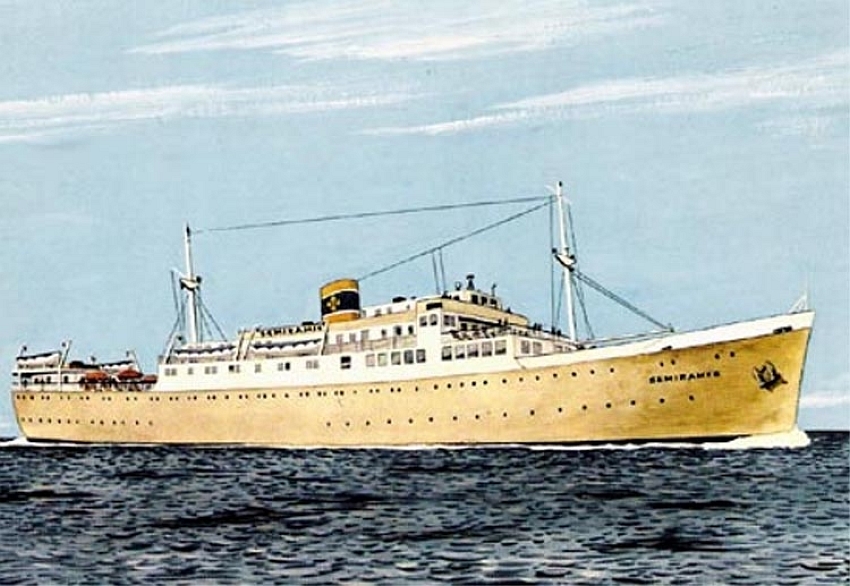
The
MV Semiramis, the ship that commenced a cruise revolution in the Aegean
Epirotiki
Index:
Page One
… MV
Semiramis the first ship!
Page One B … MV
Semiramis Deck Plan.
Page
Two … The Early Ships - SS Hermes, Atreus,
Pegasus & Hermes II.
Page Three … MS Argonaut.
Page Three B … MS Argonaut Deck Plan.
Page Four … MTS
Jason.
Page Four B … MTS
Jason, later MS Ocean Odyssey - Deck Plans.
Page Five … MTS Orpheus II.
Page Six … MTS Apollon II.
Page Six B … MTS Orpheus II &
Apollon II - Deck Plans. “
“Blue Water
Liners sailing to the distant shores.
I watched them come, I watched them go and I watched them die.”
****************************
Return
to the ssMaritime Main INDEX
Where
you will discover over 700 Classic Passenger & Passenger-Cargo Liners!
ssMaritime.com & ssMaritime.net
Where
the ships of the past make history & the 1914 built MV Doulos Story
Please
Note: ssmaritime and associated sites are 100% non-commercial
and the author seeks no funding or favours of any
shape or form, never have and never will!
Photographs on ssmaritime and associate pages are by the author or from the
author’s private collection. In addition there are some images that have been
provided by Shipping Companies and private photographers or collectors. Credit
is given to all contributors. However, there are some photographs provided to
me without details regarding the photographer/owner concerned. I hereby invite
if owners of these images would be so kind to make them-selves known to me (my
email address may be found on www.ssmaritime.com only), in order that due credit may be
given.
This
notice covers all pages, although, and I have done
my best to ensure that all photographs are duly credited and that this notice
is displaced on each page, that is, when a page is updated!
ssMaritime is owned &
© Copyright by Reuben Goossens - All Rights Reserved


 went
to commence his own cruise company, which was “Classic International
Cruises” that in due course had an amazing fleet of ships. I was
fortunate enough to sail on them a good number of times, (and remember, my policy is as always, I pay my own fares!). Ships like
the wonderful MV Funchal and the amazing MV Athena, two ships I dearly love and
both are still sailing, but for other companies! I was to meet dear George in
went
to commence his own cruise company, which was “Classic International
Cruises” that in due course had an amazing fleet of ships. I was
fortunate enough to sail on them a good number of times, (and remember, my policy is as always, I pay my own fares!). Ships like
the wonderful MV Funchal and the amazing MV Athena, two ships I dearly love and
both are still sailing, but for other companies! I was to meet dear George in 













